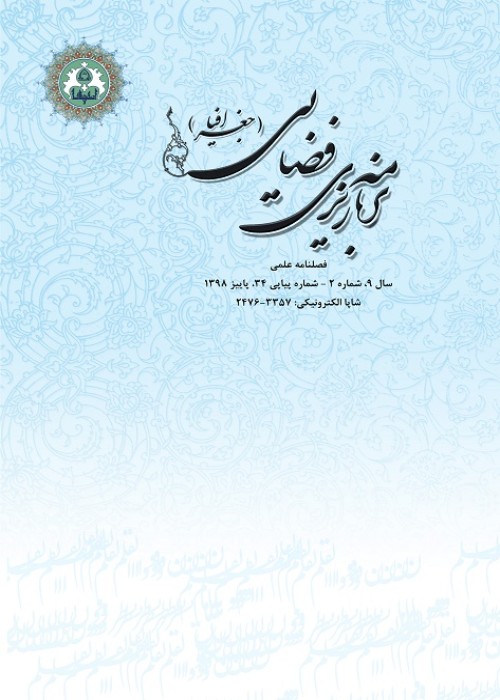The Roles of Geomorphological Factors and Change of Morphoclimatic Systems in the Formation and Evolution of Human Settlements in Central Iran (Around Shirkuh, Yazd City)
Problem definition:
Geomorphic phenomena have a primary impact on the locations, dispersions, spheres of influence, physical developments, and morphologies of settlements. In other words, geomorphic units and topographic elements are very important in physical development of settlemenets and play a significant role in the spatial distribution patterns of cities, as well as influencing the morphologies, constructions, and textures of them. Accordingly, location, orientation of mountains, and the type of landform have an undeniable role in issues such as urban construction and urban population movement. Nowadays, the increase in human population has created an increasing need to land occupation around residential areas; this is closely related to the geomorphic indicators of each area. Then, if the process of creating new settlements is formed with no proportion to natural capacities and facilities, it will create adverse effects and results in the physical-biological problems of cities, such as natural hazards, which cause disturbing the balance of the environment and disrupting services. Evidence of hazards in recent years show that most developing countries, especially in their rural areas, have high-risk physical structures that are often vulnerable to hazards. Therefore, based on various studies, there is a close relationship between geomorphological components and human settlements. These components have sometimes caused the growths and developments or emergence and expansions of settlement centers, which have sometimes appeared to be dangerous and repulsive. Therefore, recognizing the natural environment characteristics and the features and capabilities of landforms is important and necessary for identifying suitable and sustainable points for the creation and development of human settlements.
The purpose of this study was to investigate and analyze the roles of geomorphic features and components in the formations, developments, evolution, and patterns of settlements around Shirkuh Mountain in the arid and warm region of Central Iran.
To do this research, topographic and geological maps, Google Earth images, and, most importantly, field studies and observations were used. This study was based on descriptive phenomenological method. Accordingly, geomorphological factors, including altitude, direction, and lithology, geomorphic features, including fluvial landforms, such as alluvial plains, alluvial fans, plains, lake and river terraces, and glacial landforms like cirques, valleys, and glacial terraces were surveyed and analyzed. Then the role of each factor in the creation, development, and transformation of the settlements was studied and evaluated.
The results showed a different settlement pattern on the northern and southern slopes, as well as the western and eastern slopes of Shirkouh. Most of the settlements of the southern slopes were located at high altitudes between 2450-2550 m along the ice-water equilibrium line. However, the settlement range elevation on the northern slopes varied between 1700 and 1650 m, while fluvial landforms, such as river terraces, alluvial fans, and pediments, had not played a role in the formations of these settlements even with relatively good water resources unlike most other parts of Iran and the world. The settlement on glacial landforms at altitudes above 2000 m probably dated back to very dry and hot periods and the settlement on the edge of the current playa depression referred to the Late Quaternary cold periods. The formations and developments of settlements in the two completely different environments and climatic conditions, namely the high altitudes and the margins of the downstream depressions, indicated a climate change and consequently vertical displacements of the settlements along the Holocene. The results also revealed that other factors, such as geographical direction, altitude, slope, and lithology, had played an effective role in the densities and developments of these settlements.
Innovation:
This study showed that the alluvial fans had never been used to build a settlement anywhere in the study area until the last 3 decades due to heavy rainfall and heavy flooding. Although according to previous studied, most of the settlements in Iran, whether urban or rural settlements, especially in the central and eastern parts, have been located on alluvial fans, even the prehistoric settlements. Also, this study showed that glacial landforms located at the high altitudes had been the most desirable place for the creation and transformation of settlements due to specific climatic reasons.
- حق عضویت دریافتی صرف حمایت از نشریات عضو و نگهداری، تکمیل و توسعه مگیران میشود.
- پرداخت حق اشتراک و دانلود مقالات اجازه بازنشر آن در سایر رسانههای چاپی و دیجیتال را به کاربر نمیدهد.


